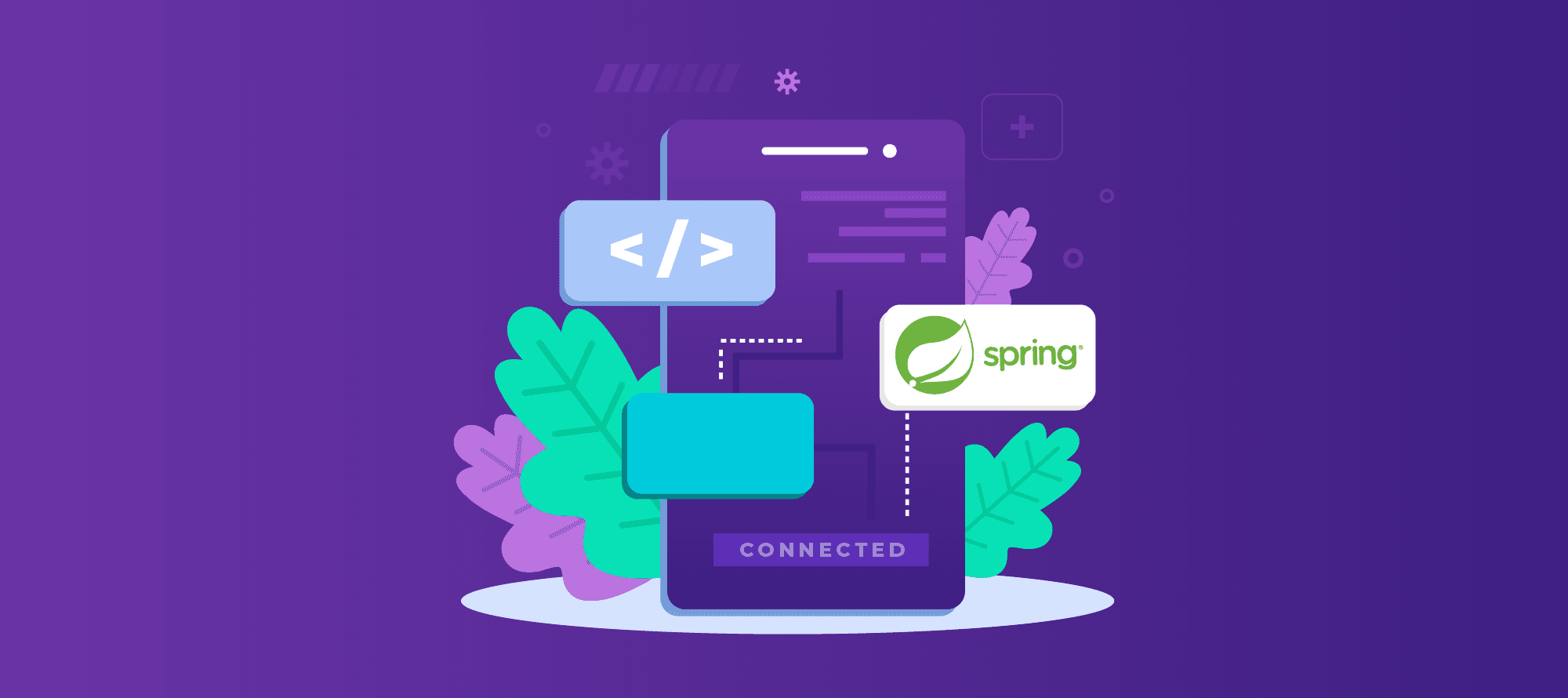
Subscribe to our Blog
We're committed to your privacy. SayOne uses the information you provide to us to contact you about our relevant content, products, and services. check out our privacy policy.

Real PradDecember 30, 202011 min read

Generating table of contents...

The open-source framework Spring Boot is widely used for building Spring applications. The framework, developed by Pivotal Software, is employed for building standalone Java applications and for traditional WAR deployments. When using the Spring Boot framework, developers can start writing the code straight away as they are not required to either prepare or configure the environment. Further, it allows flexible XML configurations, database transactions, robust batch processing, and easy workflow. Additionally, the framework offers many different tools for development.
In general, Spring Boot works by providing defaults for annotation configuration and the codes so that developers can instantly start working on a new project. Further, the framework eliminates boilerplate as well as other configurations that are designed to improve development and unit and integration testing by following a strategy called ‘Opinionated Defaults Configuration’. Spring Boot is one of the most preferred frameworks in the Java landscape for building Microservices and the performance of an application is largely dependent on them.
Microservices refer to an app’s architecture that enables the development of many key services within the app and also deploy them independently. Each service, run by its own processes, contributes to an app’s overall functionality. These services or modules communicate with each other via interfaces and strict API protocols. As each module works independently, it enables developers to use a different programming language for writing codes. Microservices are developed using the Spring Boot framework.
There are many advantages to employing Microservices for the development of large scale architecture. For one, companies that use Microservices can launch their new software faster. As such, the advantages offered by Microservices are:
The Microservice architecture enables developers to scale up/down the project size as per the requirement. This feature helps to significantly reduce the project cost. Besides, it allows the addition or removal of a module and this, in turn, enhances the stability of the project.
All modules work independently. Therefore, a service that fails does not hamper the performance of others. The code for a faulty module has to be just rewritten. This is a very important feature of Microservices architecture.
As Microservices are simple and the failure of a module does not affect the operation of the app, companies can try them out for new processes, algorithms, and business logic.
As the modules of Microservices work independently without affecting the performance of the application, maintenance and debugging become simple and easy.
Typically, the performance of an app would be significantly impacted when it is being updated. The Microservices architecture allows the replacement or updation of individual modules without affecting the performance of the application.
Typically, app development service providers constitute their teams based on the modules that are required to be developed. In the case of the Spring Boot framework, the teams will be smaller in size and this enables developers to focus more on providing better service and fulfilling the specific needs and demands of their customers. This is because the developers would be in a better position to understand the end-users’ perspective clearly and enhance their productivity.
Spring Boot, the framework for developing Microservice architecture, improves the efficiency of the applications by making it easy to use and implement basic architectural concepts like RESTful HTTP and embedded web application runtimes. The framework also allows developers to select the parts of a frame as needed and pack the Spring Boot applications in smaller units.
Java developers very well know the independent capabilities of Spring Boot and that dependency management is equally important. Spring Boot provides several dependencies for the management of large projects. Some of them are:
#1: Actuator dependency – This dependency helps developers track the performance and functionality of apps. In addition, it enables the management of the various functions of apps.
#2: Security dependency – Added to the classpath, this dependency automatically acquires the basic authentication for all the HTTP endpoints as required.
#3: Web dependency – Several different servers such as the Mobile View Controller or MVC, REST, and Tomcat are utilized by a web dependency in Spring Boot. This single Spring Boot dependency can fetch all the required dependencies for web development.
#4: Thyme leaf dependency – The Java-based theme library Thyme Leaf provided by Spring Boot is employed for building web apps. This dependency supports XHTML/HTML5 for web-apps.
#5: Test dependency – The Spring Boot dependency for app testing contains all major elements required for conducting a thorough test. In addition, it eliminates the need for configuring and starting an actual database for the purpose of testing.
Spring Boot’s auto-configuration feature is very helpful in DevOps application development, deployment, and continuous delivery. As an example, consider the MySQL database as a classpath. Failure to configure any connection with the database affects the performance of an application because of database dependencies. This problem can be overcome by auto-configuring an in-memory database offered by Spring Boot. The Auto Configuration annotation has to be employed to the main class file in order to the feature.
There is an entry point with a class containing an annotation for any Spring Boot application. The annotation specifies a method that runs the Spring Boot application. The method includes auto-configuration, Spring Boot configuration, and component scan. A single annotation manages all dependencies of Spring Boot applications.
When an application is initialized, Spring Boot analyzes all the components. It scans all the beans associated with an application and other package declarations. For initializing a component scan, the @ComponentScan annotation has to be used for all the class files.
Having understood how the framework enables the app development process, the reasons why Spring Boot is considered the new age framework for app development can be summarized as follows:
It is based on Java, one of the most popular programming languages in the world
Spring Boot is helpful in quickly building an application without worrying about configuration ⠀
As Spring Boot has one of the largest user communities, it is easy to learn as free courses and sufficient learning material are available
Spring Boot is multi-threaded and this feature is very helpful when performing long and repetitive operations
It reduces the development time and increases the team’s overall efficiency
It autoconfigures all components and enables the development of a production-grade app
It facilitates the development and testing of Java-based apps by making available a default setup for testing integration efficacy and individual units
It eliminates the need to write boilerplate code, complex XML configurations, and annotations manually
For the testing of web applications, Spring Boot offers embedded HTTP servers such as Jetty and Tomcat
The integration of the Spring Boot framework with the Spring’s ecosystem which includes data, security, ORM, and JDBC is very easy
Spring Boot offers many plugins that app developers can make use of to readily and smoothly work with in-memory and embedded databases
It allows quick and easy connection with queue and database management services such as Oracle, PostgreSQL, MongoDB, Redis, MySQL, Solr, ElasticSearch, ActiveMQ, Rabbit MQ, and many more
It provides admin support, meaning the application can be remotely accessed as well as managed
Apart from offering Embedded Servlet Container, it eases dependency
It offers flexibility when it comes to configuring XML, Java Beans, and database transaction
The development, as well as testing of Spring Boot apps, developed using Java or Groovy become more agile as it makes access to Command Line Interface easier
1. Increased complexity: Microservice architectures are inherently more complex than monoliths due to the increased number of components, services, and interactions. This can lead to increased debugging time and difficulty when issues arise.
2. Increased overhead: Implementing and managing a microservice architecture requires additional overhead in terms of both time and resources. This includes setting up the infrastructure, configuring services and networking, deploying applications, and managing security.
3. Data consistency: Maintaining data consistency across multiple services can be a challenge. This is especially true when services need to share data or when data needs to be updated in multiple services at once.
4. Service discovery: In a microservice architecture, services need to be able to communicate with each other in order to function properly. This requires a mechanism for services to be able to discover each other, which can be difficult to implement.
5. Testing and deployment: Testing and deploying a microservice architecture is more complex than a monolith. This is due to the fact that each service may need to be tested individually, and deployments may need to be done in a specific order.
1. Use a service mesh for orchestration: A service mesh is an infrastructure layer that helps you manage and monitor communication between services. It can help you to orchestrate the entire process of communication between services, enabling you to quickly respond to changes in traffic patterns or the availability of services.
2. Implement a service discovery mechanism: Service discovery is the process of determining which services are running and where they are running. It helps to minimize manual configuration and allows services to automatically learn about each other and respond to changes in the environment.
3. Use a centralized logging system: Logging is an important part of any system, and microservice architectures are no different. A centralized logging system can help you to collect and analyze log data from multiple services and quickly identify and respond to issues.
4. Create a uniform API layer: A uniform API layer allows services to communicate with each other in a consistent and predictable way. This can help to minimize the complexity of the system and ensure that services are always able to communicate with each other.
5. Use a circuit breaker pattern: The circuit breaker pattern is a way of managing communication between services. It allows you to detect and isolate failing services and to prevent cascading failures from impacting the entire
Businesses are looking for ways and means to improve productivity in DevOps and reduce development times. Spring Boot framework is the right choice for avoiding XML configuration and speeding up the app development process.
It is becoming more and more important for developers to determine unique as well as innovative ways for building faster and higher-performance apps. Though other options are available, Spring Boot continues to be preferred by developers as it is not only easy to use but also helps increase productivity.
Furthermore, Spring Boot enables the development of production-ready apps and this is very helpful in prototyping and automating the testing of apps. Specifically, the app architecture and Microservices can be tested with respect to the user request so that more effective ways of rendering independent app functions can be determined. As such, the Spring Boot framework is the best choice if the goal is to reduce the development time as well as the cost.
It is very clear from the above that Microservices are very useful in ensuring the flexibility and functionality of apps. It is also clear beyond any doubt that Spring Boot is the best framework for increasing efficiency when it comes to the Microservice development service. That is why Spring Boot is considered as the new age framework for building apps.

We're committed to your privacy. SayOne uses the information you provide to us to contact you about our relevant content, products, and services. check out our privacy policy.

About Author
Co-founder and CEO at SayOne Technologies | Helping startups and enterprises to set up and scale technology teams- Python, Spring Boot, React, Angular & Mobile.

We collaborate with visionary leaders on projects that focus on quality